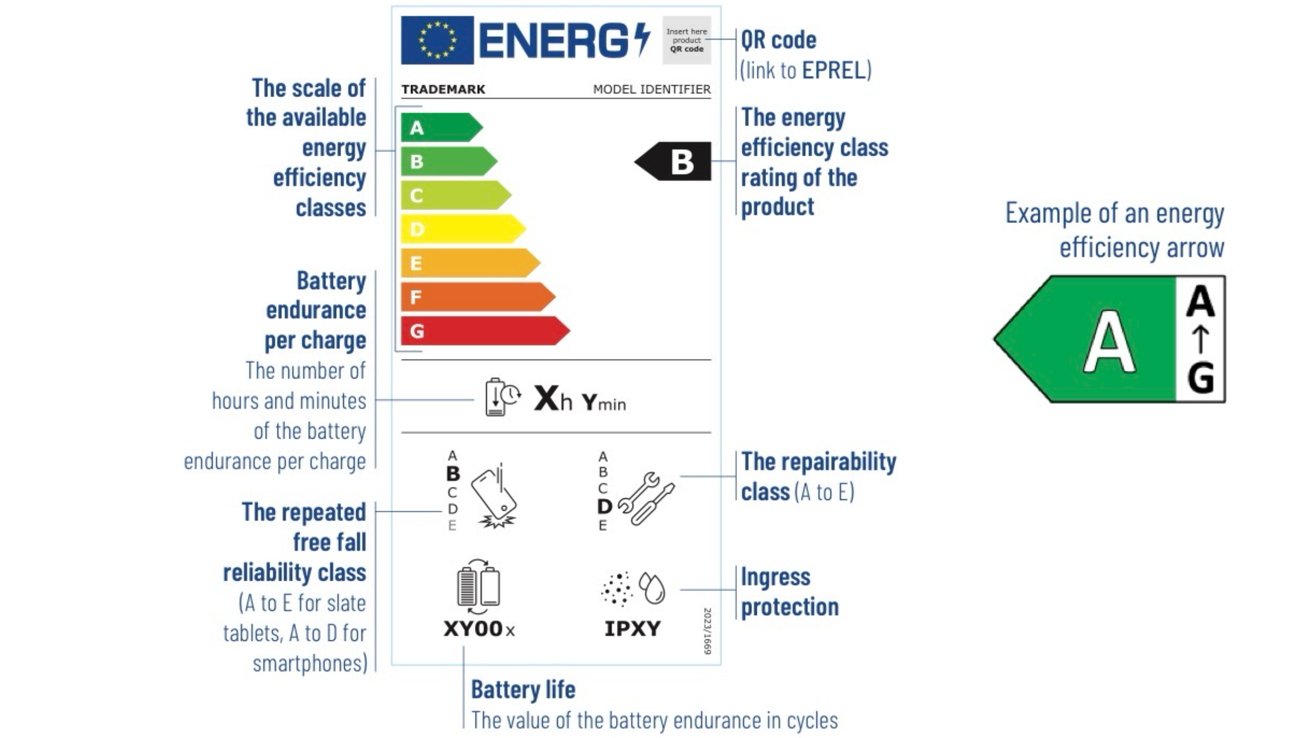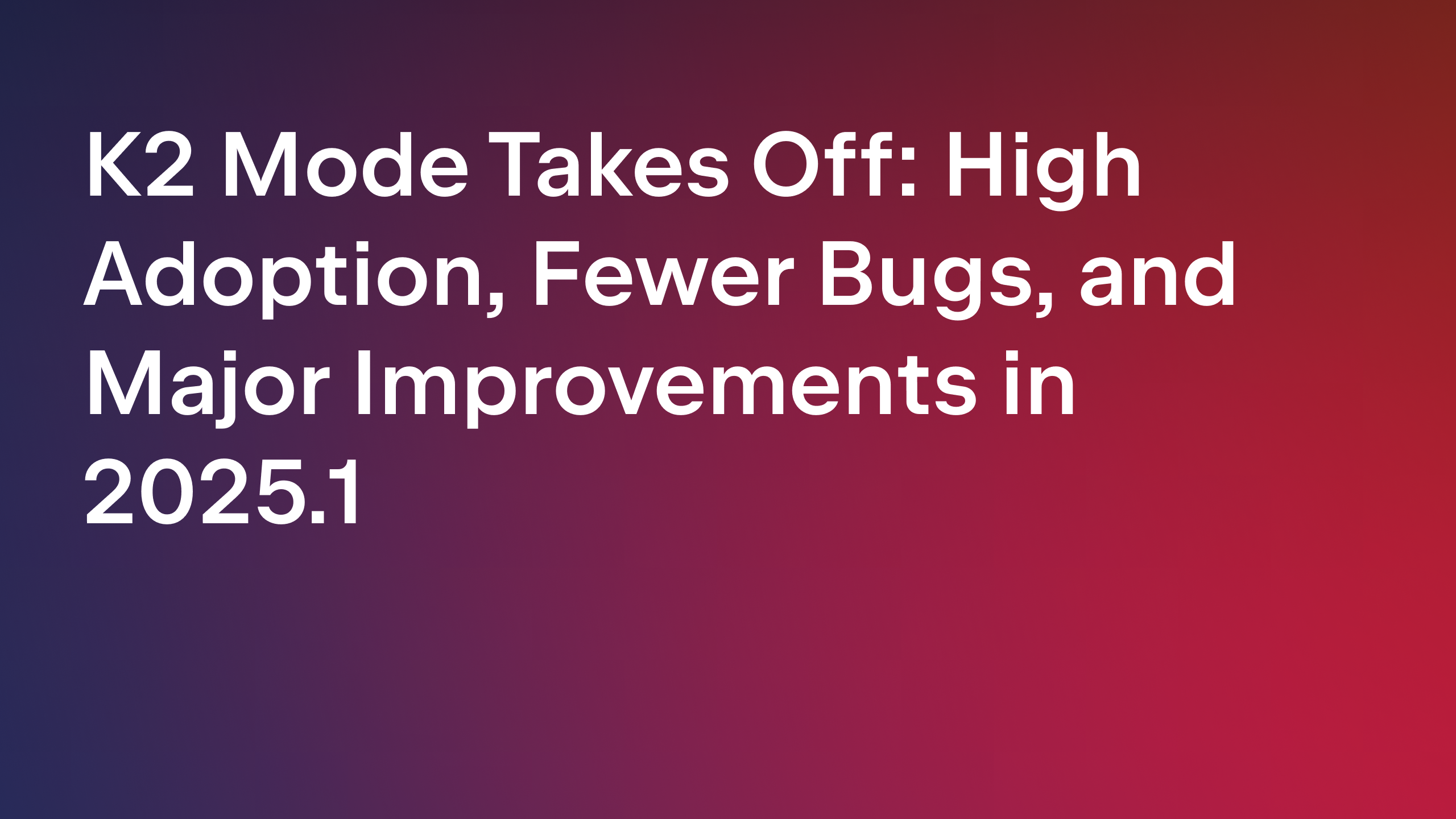VMware Fundamentals: Cluster Api Provider Cloud Director
VMware Cluster API Provider for Cloud Director: Extending Kubernetes to the VMware Cloud The relentless push for hybrid and multi-cloud strategies, coupled with the increasing adoption of Kubernetes for application modernization, presents a significant challenge for enterprise IT. Organizations are seeking ways to leverage existing VMware investments while embracing the agility and scalability of containerized applications. Traditional approaches often involve complex integrations and siloed management. VMware’s Cluster API Provider for Cloud Director (CAPCD) directly addresses this, enabling the provisioning and lifecycle management of Kubernetes clusters directly within the VMware Cloud Director (VCD) ecosystem. This isn’t just about adding Kubernetes support; it’s about extending the familiar VMware operational model – governance, security, and self-service – to the container world. Enterprises in regulated industries like finance and healthcare are particularly interested in this capability, alongside SaaS providers needing scalable, multi-tenant Kubernetes infrastructure. What is Cluster API Provider Cloud Director? Cluster API Provider Cloud Director is a Kubernetes provider that allows Cluster API to manage vSphere clusters provisioned within VMware Cloud Director. Cluster API is an open-source Kubernetes project aiming to provide a declarative, Kubernetes-style API for cluster creation, scaling, and management across various infrastructure providers. Historically, managing Kubernetes clusters on vSphere required separate tooling and workflows. CAPCD bridges this gap, allowing Kubernetes to directly interact with VCD’s APIs to provision and manage underlying vSphere resources. The core components are: Cluster API: The Kubernetes-native API for cluster lifecycle management. Cluster API Provider Cloud Director: The specific implementation that translates Cluster API requests into VCD API calls. VMware Cloud Director: The multi-tenant cloud platform providing the underlying vSphere infrastructure. vSphere: The virtualization platform where the Kubernetes nodes are deployed. Typical use cases include providing self-service Kubernetes clusters to application teams, automating cluster lifecycle management, and extending existing VCD governance policies to Kubernetes workloads. Industries adopting CAPCD include financial services (for application modernization), healthcare (for compliant container deployments), and SaaS providers (for scalable multi-tenant infrastructure). Why Use Cluster API Provider Cloud Director? CAPCD solves several critical problems for infrastructure and application teams. For infrastructure teams, it reduces operational overhead by automating cluster provisioning and management. Instead of manually configuring vSphere resources, they define desired cluster states through Kubernetes manifests. SREs benefit from improved cluster reliability and scalability through automated remediation and scaling capabilities. DevOps teams gain faster application delivery cycles by enabling self-service Kubernetes infrastructure. CISOs appreciate the extended governance and security controls provided by VCD, ensuring compliance with organizational policies. Consider a financial institution migrating a legacy application to a containerized microservices architecture. Previously, provisioning Kubernetes clusters required weeks of manual effort and coordination between multiple teams. With CAPCD, a developer can request a Kubernetes cluster through a self-service portal, and the infrastructure is automatically provisioned and configured within VCD, adhering to pre-defined security and compliance policies. This reduces time-to-market and minimizes the risk of misconfiguration. Key Features and Capabilities Declarative Cluster Management: Define desired cluster states using Kubernetes manifests, and CAPCD handles the provisioning and configuration. Use Case: Automate cluster creation based on GitOps principles. Self-Service Kubernetes: Enable application teams to provision and manage their own Kubernetes clusters through a self-service portal. Use Case: Empower developers to rapidly deploy and scale applications without relying on infrastructure teams. VCD Governance Integration: Leverage existing VCD policies for networking, storage, and security to govern Kubernetes clusters. Use Case: Enforce consistent security policies across all Kubernetes deployments. Automated Cluster Scaling: Automatically scale Kubernetes clusters based on resource utilization. Use Case: Dynamically adjust cluster capacity to meet fluctuating application demands. Automated Cluster Upgrades: Simplify Kubernetes version upgrades with automated workflows. Use Case: Maintain a secure and up-to-date Kubernetes environment with minimal downtime. Multi-Tenancy Support: Leverage VCD’s multi-tenant capabilities to isolate Kubernetes clust

VMware Cluster API Provider for Cloud Director: Extending Kubernetes to the VMware Cloud
The relentless push for hybrid and multi-cloud strategies, coupled with the increasing adoption of Kubernetes for application modernization, presents a significant challenge for enterprise IT. Organizations are seeking ways to leverage existing VMware investments while embracing the agility and scalability of containerized applications. Traditional approaches often involve complex integrations and siloed management. VMware’s Cluster API Provider for Cloud Director (CAPCD) directly addresses this, enabling the provisioning and lifecycle management of Kubernetes clusters directly within the VMware Cloud Director (VCD) ecosystem. This isn’t just about adding Kubernetes support; it’s about extending the familiar VMware operational model – governance, security, and self-service – to the container world. Enterprises in regulated industries like finance and healthcare are particularly interested in this capability, alongside SaaS providers needing scalable, multi-tenant Kubernetes infrastructure.
What is Cluster API Provider Cloud Director?
Cluster API Provider Cloud Director is a Kubernetes provider that allows Cluster API to manage vSphere clusters provisioned within VMware Cloud Director. Cluster API is an open-source Kubernetes project aiming to provide a declarative, Kubernetes-style API for cluster creation, scaling, and management across various infrastructure providers. Historically, managing Kubernetes clusters on vSphere required separate tooling and workflows. CAPCD bridges this gap, allowing Kubernetes to directly interact with VCD’s APIs to provision and manage underlying vSphere resources.
The core components are:
- Cluster API: The Kubernetes-native API for cluster lifecycle management.
- Cluster API Provider Cloud Director: The specific implementation that translates Cluster API requests into VCD API calls.
- VMware Cloud Director: The multi-tenant cloud platform providing the underlying vSphere infrastructure.
- vSphere: The virtualization platform where the Kubernetes nodes are deployed.
Typical use cases include providing self-service Kubernetes clusters to application teams, automating cluster lifecycle management, and extending existing VCD governance policies to Kubernetes workloads. Industries adopting CAPCD include financial services (for application modernization), healthcare (for compliant container deployments), and SaaS providers (for scalable multi-tenant infrastructure).
Why Use Cluster API Provider Cloud Director?
CAPCD solves several critical problems for infrastructure and application teams. For infrastructure teams, it reduces operational overhead by automating cluster provisioning and management. Instead of manually configuring vSphere resources, they define desired cluster states through Kubernetes manifests. SREs benefit from improved cluster reliability and scalability through automated remediation and scaling capabilities. DevOps teams gain faster application delivery cycles by enabling self-service Kubernetes infrastructure. CISOs appreciate the extended governance and security controls provided by VCD, ensuring compliance with organizational policies.
Consider a financial institution migrating a legacy application to a containerized microservices architecture. Previously, provisioning Kubernetes clusters required weeks of manual effort and coordination between multiple teams. With CAPCD, a developer can request a Kubernetes cluster through a self-service portal, and the infrastructure is automatically provisioned and configured within VCD, adhering to pre-defined security and compliance policies. This reduces time-to-market and minimizes the risk of misconfiguration.
Key Features and Capabilities
-
Declarative Cluster Management: Define desired cluster states using Kubernetes manifests, and CAPCD handles the provisioning and configuration.
- Use Case: Automate cluster creation based on GitOps principles.
-
Self-Service Kubernetes: Enable application teams to provision and manage their own Kubernetes clusters through a self-service portal.
- Use Case: Empower developers to rapidly deploy and scale applications without relying on infrastructure teams.
-
VCD Governance Integration: Leverage existing VCD policies for networking, storage, and security to govern Kubernetes clusters.
- Use Case: Enforce consistent security policies across all Kubernetes deployments.
-
Automated Cluster Scaling: Automatically scale Kubernetes clusters based on resource utilization.
- Use Case: Dynamically adjust cluster capacity to meet fluctuating application demands.
-
Automated Cluster Upgrades: Simplify Kubernetes version upgrades with automated workflows.
- Use Case: Maintain a secure and up-to-date Kubernetes environment with minimal downtime.
-
Multi-Tenancy Support: Leverage VCD’s multi-tenant capabilities to isolate Kubernetes clusters for different organizations or teams.
- Use Case: Provide dedicated Kubernetes infrastructure to multiple customers in a managed service offering.
-
Integration with VCD Extensibility: Utilize VCD extensions to customize cluster provisioning and management.
- Use Case: Integrate with third-party monitoring or security tools.
-
Support for Multiple Kubernetes Distributions: Compatible with various Kubernetes distributions, including Tanzu Kubernetes Grid (TKG).
- Use Case: Flexibility to choose the Kubernetes distribution that best meets application requirements.
-
Lifecycle Management: Automated creation, deletion, and updates of Kubernetes clusters.
- Use Case: Streamline the entire Kubernetes cluster lifecycle from development to production.
-
Resource Optimization: Efficiently utilize vSphere resources by dynamically allocating resources to Kubernetes clusters.
- Use Case: Reduce infrastructure costs by optimizing resource utilization.
Enterprise Use Cases
Financial Services – Application Modernization (250 words): A large investment bank needed to modernize its core trading applications. They chose Kubernetes for its scalability and resilience. Using CAPCD, they provisioned dedicated Kubernetes clusters within VCD for each trading desk, ensuring isolation and compliance with strict regulatory requirements. Setup involved integrating CAPCD with their existing VCD environment and defining custom Kubernetes manifests for each trading desk’s specific needs. The outcome was a faster, more agile application delivery pipeline, reduced infrastructure costs, and improved compliance posture. Benefits included faster time-to-market for new trading features and reduced operational overhead.
Healthcare – HIPAA Compliant Deployments (220 words): A healthcare provider required a secure and compliant platform for deploying patient-facing applications. They leveraged CAPCD to provision Kubernetes clusters within VCD, utilizing VCD’s security features and RBAC controls to enforce HIPAA compliance. The setup involved configuring network policies to isolate patient data and implementing strict access controls. The outcome was a secure and compliant Kubernetes environment for deploying sensitive healthcare applications. Benefits included reduced risk of data breaches and improved compliance with regulatory requirements.
Manufacturing – Edge Computing (210 words): A manufacturing company wanted to deploy Kubernetes clusters at the edge to process data from IoT sensors in real-time. They used CAPCD to provision Kubernetes clusters within VCD, leveraging VCD’s distributed architecture to manage clusters across multiple edge locations. Setup involved configuring network connectivity between VCD and the edge locations. The outcome was a scalable and resilient edge computing platform for processing IoT data. Benefits included reduced latency and improved real-time decision-making.
SaaS Provider – Multi-Tenant Infrastructure (230 words): A SaaS provider needed a scalable and multi-tenant Kubernetes infrastructure to support its growing customer base. They used CAPCD to provision dedicated Kubernetes clusters for each customer within VCD, ensuring isolation and security. Setup involved integrating CAPCD with their existing billing and provisioning systems. The outcome was a scalable and cost-effective multi-tenant Kubernetes infrastructure. Benefits included improved customer satisfaction and reduced operational costs.
Government – Secure Application Hosting (200 words): A government agency required a secure platform for hosting sensitive applications. They leveraged CAPCD to provision Kubernetes clusters within VCD, utilizing VCD’s security features and compliance certifications to meet stringent security requirements. Setup involved implementing strict access controls and auditing all Kubernetes activity. The outcome was a secure and compliant Kubernetes environment for hosting sensitive government applications. Benefits included improved security posture and reduced risk of cyberattacks.
Retail – E-commerce Platform Scaling (240 words): A large retailer needed to scale its e-commerce platform to handle peak traffic during holiday seasons. They used CAPCD to provision Kubernetes clusters within VCD, leveraging VCD’s automated scaling capabilities to dynamically adjust cluster capacity based on demand. Setup involved configuring auto-scaling policies and integrating CAPCD with their existing monitoring systems. The outcome was a highly scalable and resilient e-commerce platform that could handle peak traffic without performance degradation. Benefits included increased revenue and improved customer experience.
Architecture and System Integration
graph LR
A[Application Team] --> B(Kubernetes CLI/API);
B --> C{Cluster API};
C --> D[Cluster API Provider Cloud Director];
D --> E(VMware Cloud Director API);
E --> F[VMware Cloud Director];
F --> G[vSphere];
G --> H[Kubernetes Nodes];
H --> I[Applications];
D --> J[vCenter Server];
D --> K[NSX-T];
J --> G;
K --> G;
L[Monitoring (Aria Operations)] --> H;
M[Logging (vRealize Log Insight)] --> H;
N[IAM (vCD Roles)] --> E;
This diagram illustrates the flow of requests from an application team through Kubernetes, Cluster API, CAPCD, and ultimately to VCD and vSphere. CAPCD interacts with vCenter Server for VM provisioning and NSX-T for networking. Monitoring and logging are integrated through VMware Aria Operations and vRealize Log Insight, respectively. IAM is handled through VCD’s role-based access control (RBAC) system. Network flow is managed by NSX-T, providing micro-segmentation and security policies.
Hands-On Tutorial
This example demonstrates provisioning a simple Kubernetes cluster using CAPCD and the kubectl CLI. Prerequisites: Access to a VMware Cloud Director environment with CAPCD installed, kubectl configured to connect to the Cluster API server.
- Install Cluster API: (Assumes a Linux environment)
curl -sSL https://raw.githubusercontent.com/kubernetes-sigs/cluster-api/master/bootstrap/install.sh | sh
- Create a Cluster Manifest (cluster.yaml):
apiVersion: cluster.x-k8s.io/v1beta1
kind: Cluster
metadata:
name: my-vcd-cluster
spec:
infrastructureRef:
kind: VSphereCluster
name: my-vcd-cluster-infra
- Create an Infrastructure Manifest (vspherecluster.yaml):
apiVersion: infrastructure.cluster.x-k8s.io/v1beta1
kind: VSphereCluster
metadata:
name: my-vcd-cluster-infra
spec:
vcd:
org: Replace placeholders with your VCD environment details.
- Apply the Manifests:
kubectl apply -f cluster.yaml
kubectl apply -f vspherecluster.yaml
- Verify Cluster Creation:
kubectl get clusters
This will show the status of your cluster. It may take several minutes to provision.
- Tear Down:
kubectl delete cluster my-vcd-cluster
Pricing and Licensing
CAPCD itself is open-source. However, utilizing it requires a VMware Cloud Director license. VCD licensing is typically based on CPU cores or a subscription model. A typical small-to-medium sized Kubernetes cluster (e.g., 3 worker nodes with 4 vCPUs each) running on VCD could cost approximately $500 - $1500 per month, depending on the VCD edition and any additional services (e.g., NSX Advanced Load Balancer). Cost-saving tips include right-sizing VMs, utilizing reserved instances, and optimizing resource utilization.
Security and Compliance
Securing CAPCD involves securing the entire stack: VCD, vSphere, and Kubernetes. Implement strong RBAC policies in VCD to control access to resources. Utilize NSX-T micro-segmentation to isolate Kubernetes workloads. Regularly scan Kubernetes images for vulnerabilities. CAPCD supports compliance with standards like ISO 27001, SOC 2, PCI DSS, and HIPAA, depending on the VCD environment’s certifications. Example RBAC rule: Grant developers read-only access to Kubernetes clusters within their assigned VCD organization.
Integrations
- VMware Aria Suite: Provides comprehensive monitoring, logging, and automation capabilities for Kubernetes clusters provisioned with CAPCD.
- NSX-T Data Center: Enables advanced networking and security features, including micro-segmentation and load balancing.
- Tanzu Kubernetes Grid (TKG): CAPCD can manage TKG clusters deployed within VCD, providing a consistent operational experience.
- vSAN: Provides persistent storage for Kubernetes workloads, leveraging vSAN’s scalability and resilience.
- vCenter Server: CAPCD relies on vCenter Server for VM lifecycle management and resource provisioning.
Alternatives and Comparisons
| Feature | Cluster API Provider Cloud Director | AWS EKS | Azure AKS |
|---|---|---|---|
| Integration with Existing VMware Infrastructure | Excellent | Limited | Limited |
| Multi-Tenancy | Native through VCD | Requires complex configuration | Requires complex configuration |
| Governance & Policy Enforcement | Strong through VCD | AWS Policies | Azure Policies |
| Cost | VCD Licensing + vSphere Resources | Pay-as-you-go | Pay-as-you-go |
| Complexity | Moderate | Moderate | Moderate |
When to Choose: Choose CAPCD if you have significant existing VMware investments and require tight integration with VCD’s governance and multi-tenancy features. Choose AWS EKS or Azure AKS if you are primarily invested in those cloud platforms.
Common Pitfalls
- Incorrect VCD Configuration: Ensure VCD is properly configured with appropriate networks, storage, and VM templates. Fix: Verify VCD settings and consult the CAPCD documentation.
- Insufficient Permissions: The Kubernetes service account needs sufficient permissions in VCD. Fix: Grant the necessary roles and permissions in VCD.
- Network Connectivity Issues: Ensure network connectivity between the Kubernetes cluster and VCD. Fix: Verify network configurations and firewall rules.
- Template Incompatibilities: The VCD VM template must be compatible with Kubernetes requirements. Fix: Use a supported VM template or customize an existing one.
- Ignoring Resource Limits: Failing to define resource limits for Kubernetes pods can lead to resource contention. Fix: Define appropriate resource requests and limits for all Kubernetes pods.
Pros and Cons
Pros:
- Tight integration with existing VMware infrastructure.
- Strong governance and security features.
- Self-service Kubernetes provisioning.
- Automated cluster lifecycle management.
Cons:
- Requires a VMware Cloud Director license.
- Steeper learning curve compared to managed Kubernetes services.
- Dependency on VCD availability.
Best Practices
- Security: Implement strong RBAC policies, utilize NSX-T micro-segmentation, and regularly scan Kubernetes images for vulnerabilities.
- Backup & DR: Implement regular backups of Kubernetes cluster data and configure disaster recovery procedures.
- Automation: Automate cluster provisioning and management using GitOps principles.
- Logging & Monitoring: Integrate with VMware Aria Operations and vRealize Log Insight for comprehensive monitoring and logging.
- Regular Updates: Keep CAPCD and Kubernetes up-to-date with the latest security patches and features.
Conclusion
VMware Cluster API Provider for Cloud Director is a powerful solution for organizations seeking to extend Kubernetes to their VMware Cloud Director environments. It empowers infrastructure teams to automate cluster lifecycle management, enables self-service Kubernetes for application teams, and extends existing VCD governance policies to the container world. For infrastructure leads, it offers a path to modernizing applications without abandoning existing investments. For architects, it provides a robust and secure platform for deploying Kubernetes workloads. For DevOps teams, it accelerates application delivery and improves agility. The next step is to conduct a Proof of Concept (PoC) to evaluate CAPCD in your environment, review the official VMware documentation, and contact the VMware team for expert guidance.











































































![Oakley and Meta Launch Smart Glasses for Athletes With AI, 3K Camera, More [Video]](https://www.iclarified.com/images/news/97665/97665/97665-640.jpg)

![How to Get Your Parents to Buy You a Mac, According to Apple [Video]](https://www.iclarified.com/images/news/97671/97671/97671-640.jpg)

















































































































_Paul_Markillie_Alamy.jpg?width=1280&auto=webp&quality=80&disable=upscale#)
_Frank_Peters_Alamy.jpg?width=1280&auto=webp&quality=80&disable=upscale#)



















































































































![[The AI Show Episode 154]: AI Answers: The Future of AI Agents at Work, Building an AI Roadmap, Choosing the Right Tools, & Responsible AI Use](https://www.marketingaiinstitute.com/hubfs/ep%20154%20cover.png)
![[The AI Show Episode 153]: OpenAI Releases o3-Pro, Disney Sues Midjourney, Altman: “Gentle Singularity” Is Here, AI and Jobs & News Sites Getting Crushed by AI Search](https://www.marketingaiinstitute.com/hubfs/ep%20153%20cover.png)

















































































































































































.png?#)































































